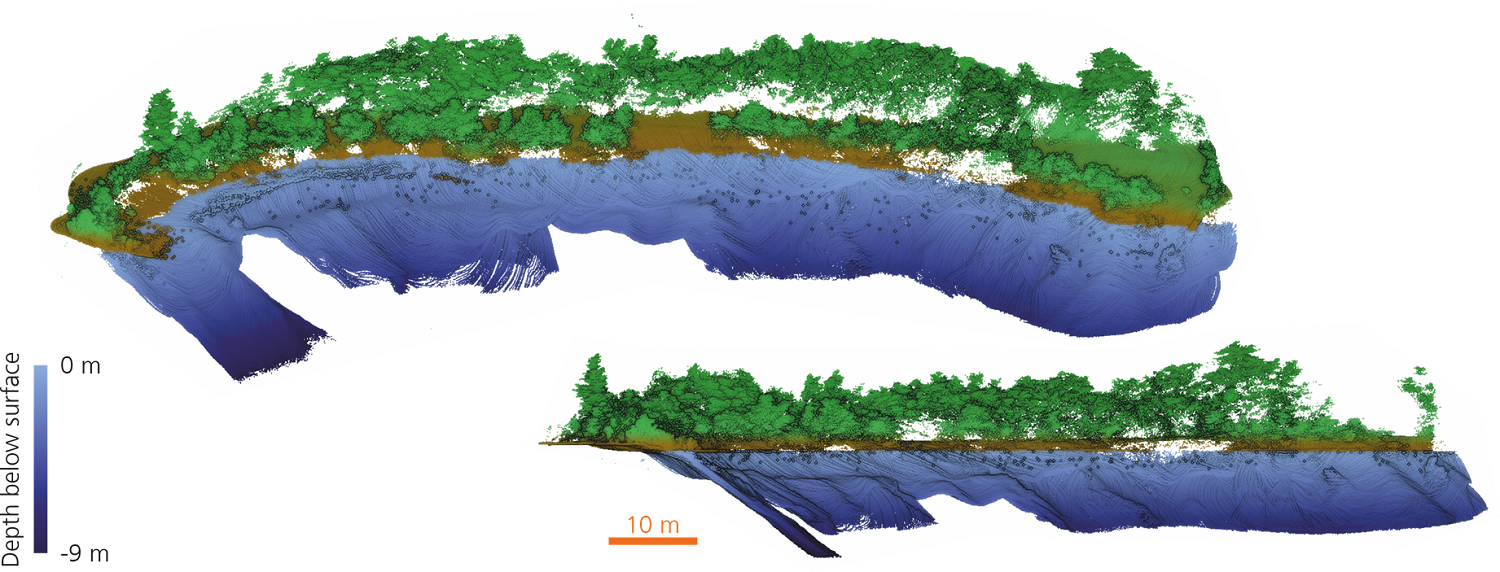
Bathymetric monitoring of waterways and coastal areas
The surveying of the topography of seabeds and waterbeds as well as of water infrastructure is gaining in importance worldwide. This is due to increasing water traffic in times of globalized trade on the one hand, and coastal protection in the face of climate change on the other. Both developments have a considerable impact on marine and water infrastructure.
Regular monitoring of water floors and critical elements is therefore important. Nowadays, waterways and coastal areas are bathymetrically mapped through satellite or airborne remote sensing. Infrastructure elements, on the other hand, are mostly examined manually on site. The disadvantages: The resolution of aerial and satellite images is limited and data acquisition is costly. Manual inspections are also expensive because they are time-consuming. Moreover, they do not provide an objective test result. Scanner-based bathmetry systems such as the Airborne Bathymetric Laser Scanner ABS by Fraunhofer IPM can contribute significantly to the safety of our waters in the future.
Multi-wavelength airborne laser scanner for high resolution measurements of seabed topography
Lightweight and comparatively inexpensive bathymetry systems delivering high-resolution measurement data are not available on the market today. The Airborne Bathymetric Laser Scanner ABS was developed for bathymetric and ecological applications (e.g. for monitoring water depth in shallow waters such as lakes or oceans coastlines). The ABS is designed as a particularly small and lightweight measuring system that – mounted on a special UAV – can safely navigate over the water surface. The laser scanner measures from an altitude of up to 100 meters based on pulsed time-of-flight measurement with two different wavelengths. Using multi-wavelength LiDAR guarantees highly precise measurements as a basis generating detailled 3D topographic maps. The ABS can be equipped with a GNSS/IMU positioning solution. The geo-referenced data is available as a complete full waveform as well as a point cloud in LAS format.
